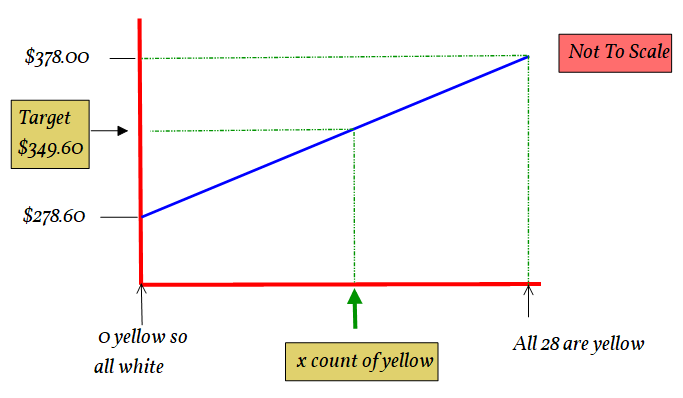A store sells yellow sweatshirts for $13.50 and white sweatshirts for $9.95. In one day, 28 sweatshirts are sold for a total of $349.60. How many of each colour were sold?
3 Answers
A total of 8 white and 20 yellow sweatshirts were sold.
Explanation:
Let
Let
We are given that the total number of sweatshirts sold is 28. This means:
#w+y=28#
We are also given the total sales as $349.60. This means:
or
#9.95w + 13.5y = 349.6#
This gives us a system of two linear equations, which can be solved using many methods, including substitution:
#color(white)(=>)w+y=28#
#=> color(white)(w+)y=color(blue)(28-w)" "# (Sub into the other equation)
#color(white)(=>)9.95w + 13.5y " "= 349.6#
#=>9.95w+13.5color(blue)((28-w))=349.6#
#=>9.95w+378 - 13.5w" "=349.6#
#=>" "–3.55w=–28.4#
#=>" "w=(–28.4)/(–3.55) = color(orange)8#
Now sub this back into the first equation:
#color(white)(=>)w+y=28#
#=>" "color(orange)8+y=28#
#=>" "y=20#
So a total of 8 white and 20 yellow sweatshirts were sold.
Modelling using the context of a graph's gradient.
20 yellow and 8 white
Explanation:
The total count of sweatshirts is fixed at 28. So if we only count the yellow ones ($13.50) then the count of white ones are directly related by: 28 - count of yellow. Consequently we can solve this by only considering the yellow. Believe it or not this can and may be represented by a straight line graph. Bear with me on this.
Suppose all 28 sweatshirts were the white ones.
For this condition the total cost would be:
Suppose all 28 sweatshirts were the yellow ones.
For this condition the total cost would be:

The gradient of part is the same as the gradient of all of it.
Really you are using ratios
Turn everything upside down
~~~~~~~~~~~~~~~~~~~~~~~~~~~~~~~~~~~~~~~~~~~~
Check:
20 yellow sweatshirts and 8 white.
Explanation:
Let the count of yellow sweatshirts be
Then the count of white is
Thus we have:
(Count yellow x cost yellow) + (count white x cost white) = $349.60
Dropping the $ sign


